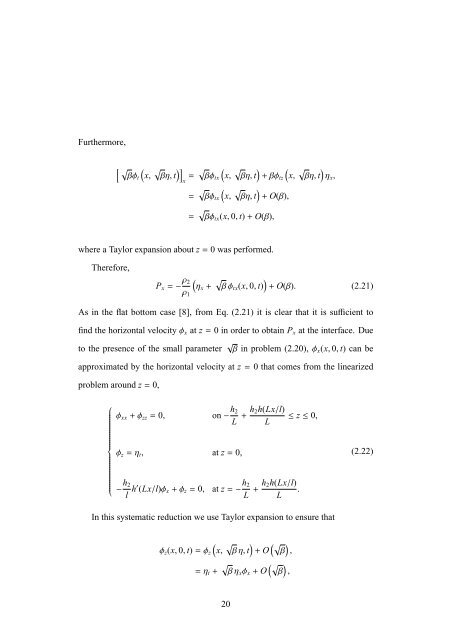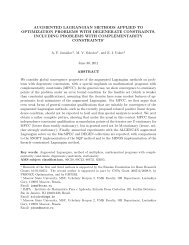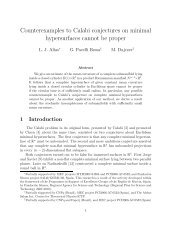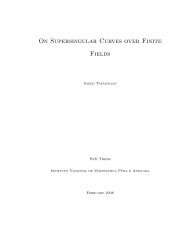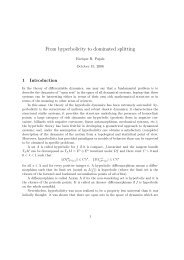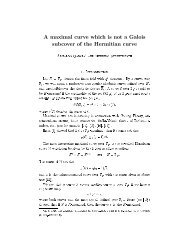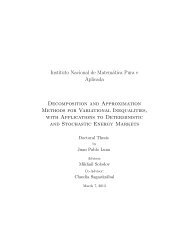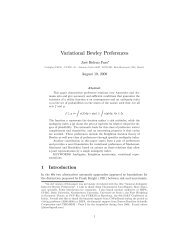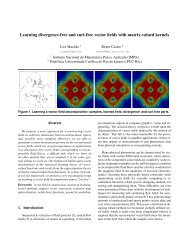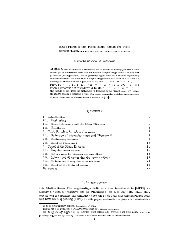a reduced model for internal waves interacting with submarine ...
a reduced model for internal waves interacting with submarine ...
a reduced model for internal waves interacting with submarine ...
Create successful ePaper yourself
Turn your PDF publications into a flip-book with our unique Google optimized e-Paper software.
Furthermore,<br />
[√ ( √ )]<br />
βφt x, βη, t =√ ( √ ) ( √ )<br />
βφ tx x, βη, t +βφtz x, βη, t ηx ,<br />
x<br />
= √ ( √ )<br />
βφ tx x, βη, t + O(β),<br />
= √ βφ tx (x, 0, t)+O(β),<br />
where a Taylor expansion about z=0 was per<strong>for</strong>med.<br />
There<strong>for</strong>e,<br />
P x =− ρ 2<br />
ρ 1<br />
(<br />
ηx + √ βφ tx (x, 0, t) ) + O(β). (2.21)<br />
As in the flat bottom case [8], from Eq. (2.21) it is clear that it is sufficient to<br />
find the horizontal velocityφ x at z=0 in order to obtain P x at the interface. Due<br />
to the presence of the small parameter √ β in problem (2.20),φ x (x, 0, t) can be<br />
approximated by the horizontal velocity at z=0 that comes from the linearized<br />
problem around z=0,<br />
⎧<br />
φ xx +φ zz = 0, on− h 2<br />
L + h 2h(Lx/l)<br />
L<br />
≤ z≤0,<br />
⎪⎨<br />
φ z =η t ,<br />
at z=0,<br />
(2.22)<br />
⎪⎩<br />
− h 2<br />
l h′ (Lx/l)φ x +φ z = 0, at z=− h 2<br />
L + h 2h(Lx/l)<br />
.<br />
L<br />
In this systematic reduction we use Taylor expansion to ensure that<br />
φ z (x, 0, t)=φ z<br />
(<br />
x,<br />
√<br />
βη, t<br />
)<br />
+ O<br />
(√<br />
β<br />
)<br />
,<br />
=η t + √ βη x φ x + O (√ β ) ,<br />
20


